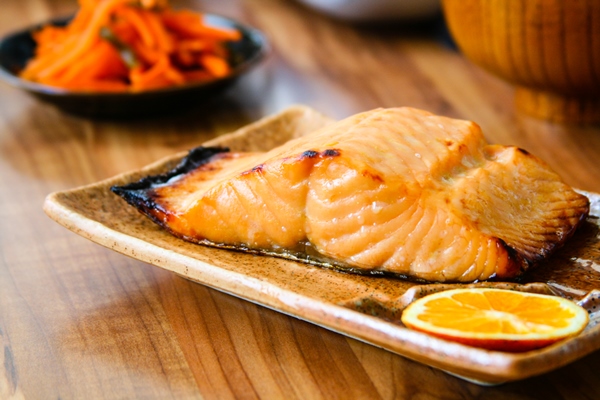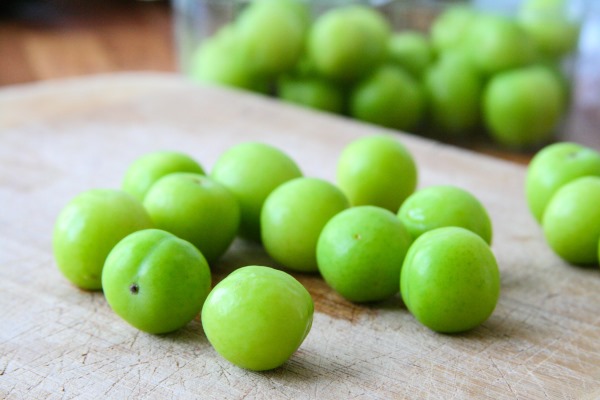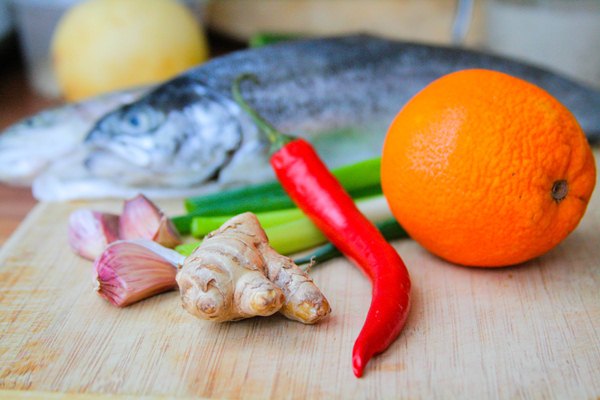Miso Grilled Salmon with Honey and Orange
As much as I love experimenting with new foods, there are times when all I want is comfort. If I’ve had a tough day and need a hug, I make a bowl of mashed potatoes with a side of cucumber salad. Or I whip up lacy crepes and eat them with plenty of sour cream and cherry jam. These dishes are old childhood favorites, and they always make me feel better. But over the years, I’ve added a new set of comfort foods to my repertoire. They range from my mother-in-law’s Indian sour lentil soups and vegetable stews to Vietnamese grilled pork on rice. And anything made with miso immediately qualifies as comfort food.

What is it about miso that makes it so comforting? It might be its intensely savory flavor or the velvety, suave aftertaste; I’m not quite sure. All I know is that I love it. Miso paste is made by fermenting soybeans and/or other grains with salt and koji, a special starter. The result is the unique vitamin and protein rich condiment that has been used in Japan for centuries. The proportions of soybeans to other grains in the miso recipe will determine its flavor and color. There are numerous miso types, but the white (shiro) and red (aka) varieties are the most common. White miso, which is really golden yellow in hue, contains more rice than soybeans and has a mild, sweet flavor. By contrast, the soybean rich red miso is meaty, bold and salty.




















Yuliya Luk in Hermes Un Jardin Sur Le Nil : Fragrance Review: I want to say that after trying many perfumes from Hermes, I was not ready to buy them and use them. I received this scent as a gift from my… April 25, 2024 at 9:30pm